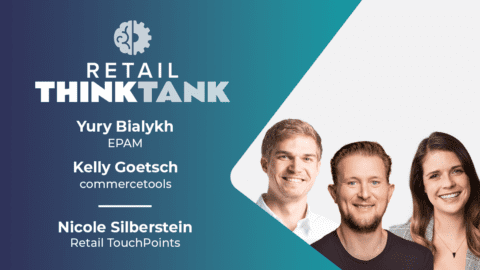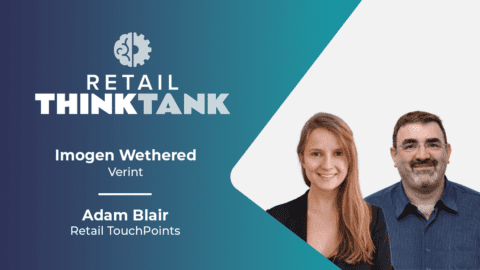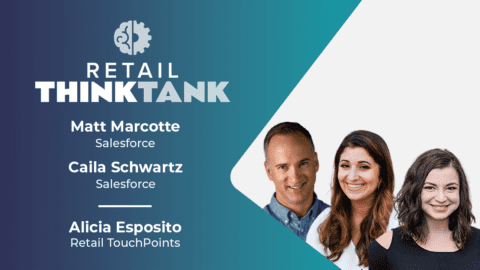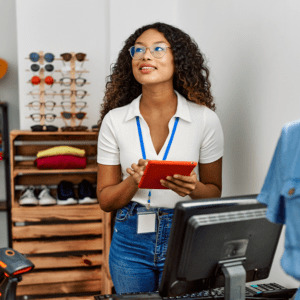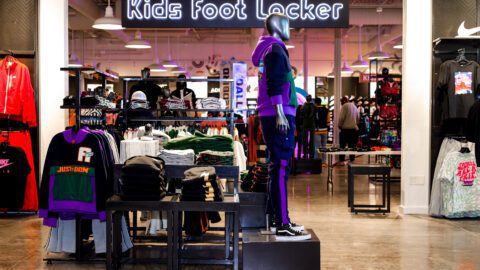The past two years have proven that the store is anything but dead. Retail has managed to bounce back from the depths of the pandemic and remain strong even in the face of high inflation, and while ecommerce continues to climb, brick-and-mortar remains absolutely vital. However, the role of the store is evolving, so retailers need to consider how they invest in modern experiential and omnichannel shops.
Brendan Witcher, VP, Principal Analyst at Forrester, shared his thoughts on what retailers need to do with their stores to maximize omnichannel performance during The New Retail Imperative: Utilizing Stores As A Competitive Advantage webinar presented by Tulip. Key takeaways include:
- Lean on mobile tools, but don’t forget associates: In-store technology is both expensive and necessary, but tapping into the technology shoppers carry in their pockets can defray some of the cost. Just be sure you give your associates the same advantages customers have;
- Invest in the experience where it makes sense: Some modern stores can be as much playgrounds as they are businesses, but retailers shouldn’t feel intimidated if their shops seem stodgy by comparison — it’s important to understand where and when experiences are worth the investment;
- Understand the limits of your own operations: Capabilities like ship-from-store and deep analytics are powerful tools that can create a true omnichannel operation, but they also create massive amounts of complexity that not every retailer is prepared to handle. There’s nothing wrong with getting the basics in place first.
Invest in Mobile Tools for Shoppers and Associates Alike
Delivering a true omnichannel experience takes heavy investments on a store-by-store basis, so retailers need to find ways to deliver connected journeys without breaking the bank. One of the most important tools they have available is their customers’ phones, which can serve as personalized touch points that cost retailers nothing.
“One of the things I remind my clients about is, it can be very, very expensive just to be able to put lots of technology in the store,” said Witcher during the webinar. “We’re going to have to put technology in the store for sure, but one of the ways we can temper some of that cost is by having customers start using their phone when they walk in the door. Start training them to use the phone when they come in, and then you can put some functionality on top of that.”
Advertisement
While putting more information at shoppers’ fingertips is important, retailers also don’t want to make shoppers feel like they’re putting in the work themselves. Mobile devices and apps have enabled wayfinding tools, product lookups and targeted in-store promotions, which are all empowering for shoppers, but retailers still want their customers to feel glad they came into the store in the first place — and this is where associates come into play.
“The important thing to remember right as you’re doing this is that your associates can’t be left behind,” said Brendan Witcher. “You can’t suddenly make your customers more aware or better informed about your store and your products than your associates [are]. That is a recipe for disaster, because then the customer loses faith; they don’t understand why they know more than your associates. So you need to be able to keep your associates on par.”
This requires parallel investments to ensure associates have access to the same features shoppers do. Retailers may want to go one step further and give their associates access to functionality that might be clunky for customers but is helpful in workers’ hands. For instance, more granular inventory tools might be an information overload for a casual browser, but they could help an experienced associate deliver strong recommendations to known customers.
Experiences Are Great — if They Fit Your Needs
The in-store experience has always been key to a strong retail strategy, and its importance has only grown as shoppers became more comfortable with skipping store visits in favor of ecommerce. Fun and unique store experiences grab headlines and wow customers, but not every retailer has the expertise, or even good reasons, to go beyond delivering a great standard shopping experience. Retailers need to understand when and why these investments are worthwhile if they want to use them properly.
“I don’t think you should turn your store into a Disneyland, by any stretch of the imagination,” said Witcher. “I don’t need an experience around Campbell’s soup or a bottle of Advil, but there are certain things where I would like to experience using that product, whether it be a golf club or rock climbing shoes. Maybe the brand itself is fun and interesting, like Showfields, where you have things like slides and all this kind of stuff. You may say oh, that’s just noise and that’s just distracting. No — it’s part of the brand image.”
Additionally, experiences don’t always have to be about inspiring joy; they can also focus on creating value, such as Canada Goose’s Snow Room, which is used to test out its gear in simulated snow and temperatures as low as -10° Fahrenheit. That said, cost must also be top of mind. A great experience can drive sales and word of mouth, but the more complex it gets, the more it will cost in both upkeep and associate time.
“There’s the cleaning of this area,” Witcher said. “There’s the maintenance of this area. There’s the safety check of this area. There’s the ability to contact a manager if someone has questions about it. There are all these things you need to be able to do, so as you think about creating a more complex environment with experiences, you also need to think about the people that work there, and how you’re going to be able to use them in ways that make the customer experience even better, not worse.”
Tech Investments Don’t Have to be ‘Sexy’
There are any number of improvements available for retailers to enhance everything from last mile to inventory management, but it remains important to focus on tools that drive value without creating too much complexity. One example is ship-from-store, which can reduce last mile costs and improve delivery speeds but also adds a significant burden to a store’s day-to-day operations.
“This is where companies got really excited,” said Witcher. “’Great, we’re going to use our stores as warehouses. We don’t have to build that $12 million facility in the middle of Kansas City.’ That’s great. That’s fantastic. Except here’s the problem — the stores were not designed to be warehouses, nor were they designed to be distribution centers. It doesn’t matter how many orders you send to the store if they just don’t have the tools and technologies. When you build a warehouse you put millions of dollars of technology in there to make sure the items go out okay.”
Associates are once again a key part of the equation, and an in-store associate isn’t going to have the time or the expertise of a dedicated warehouse worker. Retailers with the right infrastructure and staffing budget can make a ship-from-store program work well, but others may want to get the basics — such as tools to ease associates’ other tasks — in place before they add even more work to the pile.
AI and machine learning is another area that holds a lot of potential, but retailers must ensure that they’re investing in tools that they actually need. Witcher warned that retailers may want to focus on prescriptive tools that help retailers make the right decisions, such as which assignments are better suited for a new trainee versus an established veteran, rather than analytic tools that give deep insights into operations. It’s true that these granular analytics can be valuable, if you have the tools needed to turn those insights into actions. But even the biggest companies can immediately benefit from prescriptive tools.
“Think about Starbucks when they announced this huge investment in AI,” said Witcher. “They didn’t talk about very sexy stuff. They talked about removing the mundane work of the associate. And to me, that’s a really important way of being able to think about task management, staff management and being able to execute operationally on things that we couldn’t do before.”





